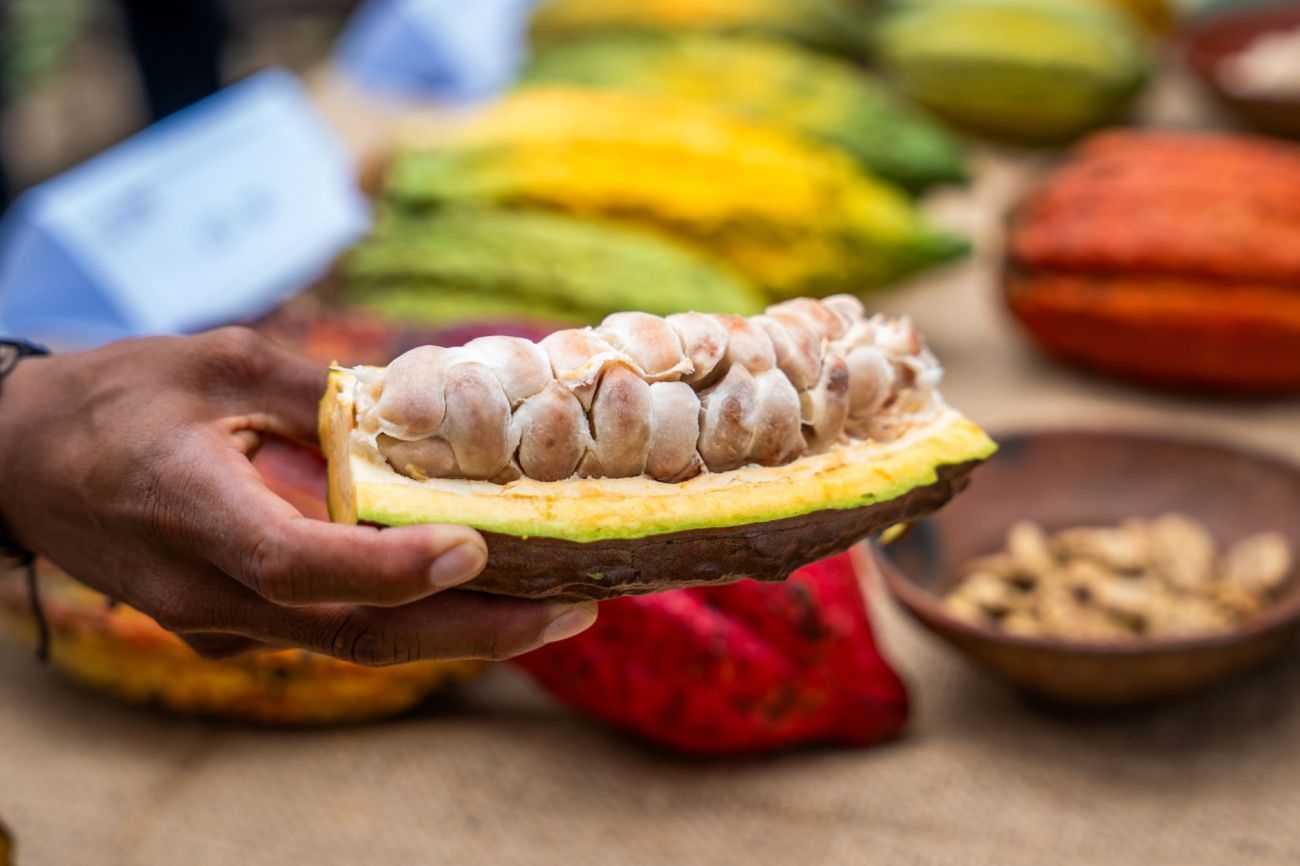DISCOVER ORGANIC COCOA AND CAROB
Cocoa is a trusted favourite for chocolate makers around the world, while carob brings a naturally sweet, caffeine-free alternative with its own character and tradition. Both are carefully cultivated to deliver reliable, high-quality ingredients you can count on.
We work closely with organic cooperatives in Colombia, the Dominican Republic and Peru, where cocoa is grown with respect for people and the land. Together with our partners on the ground, we support fair working conditions and organic farming practices that make a difference in the local farming communities.
Our assortment offers a wide range of possibilities - whether for chocolate bars, confectionery, bakery products, or plant-based recipes. Discover the full selection of organic cocoa and carob in our webshop.

THE COCOA CONNECTION
Cocoa trees grow best in the shade of tropical rainforests, including those in the Dominican Republic and Peru where we source our cocoa from. Their delicate flowers are pollinated by tiny midges, which are essential for the trees to bear fruit. The cocoa pods can weigh up to a pound and contain 20 to 60 beans nestled in sweet, fruity pulp.
After careful hand-harvesting, the pods are opened and the husks returned to the soil as natural fertiliser. The beans are then fermented and sun-dried, a slow process that develops the distinctive flavour and colour of cocoa and chocolate.
Discover how this full delicate process unfolds from tree to bean in our cocoa connection story.
A FARMER'S PERSPECTIVE
Behind every cacao tree is a farmer committed to daily care and long-term stewardship. In Colombia, organic cacao farmer Lincor Ríos Linares chose cacao as a resilient and sustainable path after a turning point in his farming life. His story shows how consistency, adaptability, and hands-on work shape cacao production - season after season.
Read how Lincor’s daily work brings organic cacao to life.


INTERESTED? LET'S CONNECT
Are you a food manufacturer, wholesaler, retailer or other food professional looking for high-quality certified organic cocoa or carob? We’re happy to help.
Get in touch, and we will provide you with all documentation, specifications, sourcing options and any other information you need.













Share page